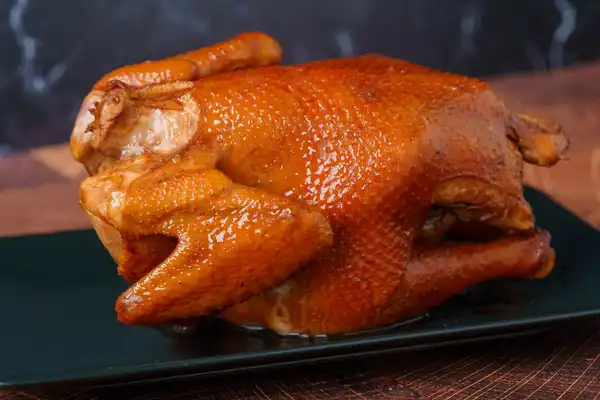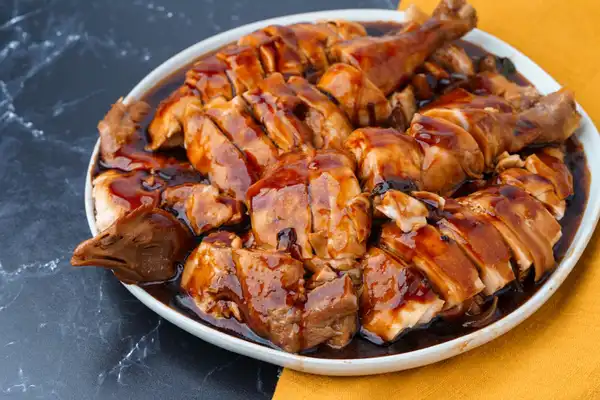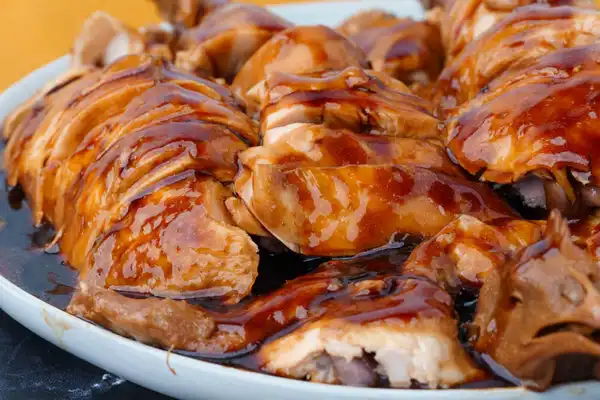Have you seen those glistening brown soy sauce chickens hanging in the window? Yes, this recipe is for that! It's less complicated than you might think, and even tastier.
The best thing about making a whole soy sauce chicken is that it's the freshest one you'll ever have, which means it'll be the juiciest, most succulent one you'll ever taste.
Also, you get a bonus: that entire pot of soy sauce used to slowly cook the chicken, which is going to be infused with the flavors of the chicken and spices? That's yours to keep and enjoy!
Thank you, Kikkoman!
This recipe is brought to you in part by Kikkoman. My dad has been using Kikkoman flavors throughout his 50-year career as a chef, and it's a privilege to get to partner with them on such an iconic recipe, Soy Sauce Chicken!
- Kikkoman products are a major flavor enhancer and bring out the “umami” taste, and helps balance and round out flavors
- Kikkoman® Less Sodium Soy Sauce is perfect for home cooks who are looking to cut down on their sodium levels, without sacrificing flavor
- Kikkoman offers wide range of Gluten-Free Asian sauces, including Gluten-Free Oyster Sauce and Gluten-Free Hoisin Sauce
- The KikkomanUSA.com Chinese site offers easy Asian recipes that home cooks can enjoy any night of the week
You can learn more about Kikkoman and follow them on social media here:
- Website: https://www.KikkomanUSA.com
- Facebook: https://www.facebook.com/KikkomanChineseUSA (Kikkoman 萬字在美)
- Instagram: https://www.instagram.com/kikkomanusa_chinese/ (Kikkoman 萬字在美)
Check out a quick story summary of our recipe!



